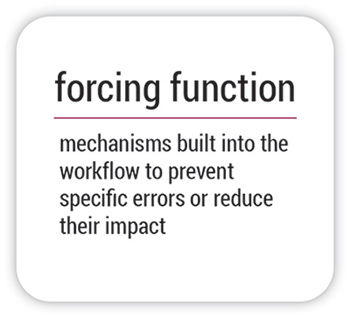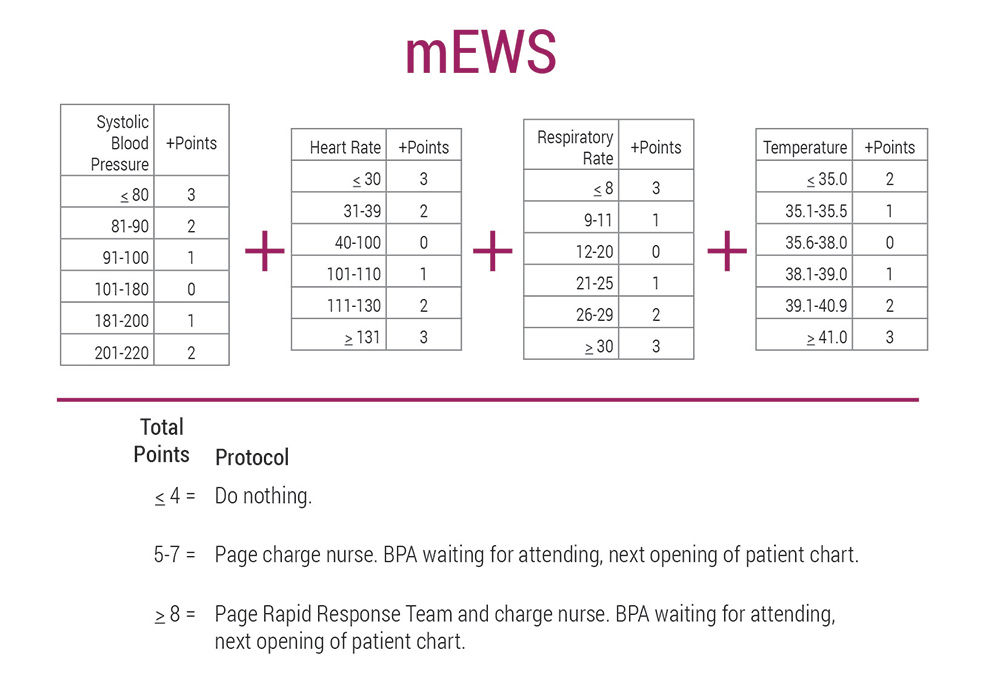pic is largely (and unfairly) viewed as a burdensome data collector and repository. But what if Epic could save lives and money with no extra work? To improve the system’s care  of sepsis (read the case here), Utah’s IT team wrote a program that tirelessly crawls through terabytes of patient data and executes a simple algorithm to alert physicians, called the modified Early Warning Score (mEWS). This forcing function frees up clinicians whose time and talents are better spent on human to human interactions.
of sepsis (read the case here), Utah’s IT team wrote a program that tirelessly crawls through terabytes of patient data and executes a simple algorithm to alert physicians, called the modified Early Warning Score (mEWS). This forcing function frees up clinicians whose time and talents are better spent on human to human interactions.
What is mEWS?
The modified Early Warning Score (mEWS) is an acuity scale. To treat sepsis, experts recommended an early warning system that dictated awareness of thresholds in specific vitals, followed by specific labs and then antibiotics delivered to the patient within an hour. Notably, mEWS scores aren’t always urgent, only when they are 5 or greater. mEWS is calculated and action dictated with this algorithm:

Have a run at it:
Your patient a patient has a respiratory rate of 23, a pulse of 86, a systolic BP of 92, and a temperature of 39.6? What should you do? (want the answer?)4 points = no alert.
Calculating this score for multiple patients at multiple times of day is challenging. Let’s say you’re an HCA on an inpatient unit. You have six patients in your care. You take vitals 6-8 times a day on each. And because sepsis is important (what isn’t?), you have been asked to calculate a mEWS score every time. That is, perform that algorithm 36-48 times per day. How many times do you think that task would be skipped? The answer is “sometimes.” And how often would human fallibility result in an error? “Sometimes” again.
The team asked Dave Roach, a seasoned Epic analyst, to build the mEWS into Epic, and then if the inpatient unit threshold is met, notify the right people (and only the right people) via Epic and a page.
What is a forcing function?
When do I need a forcing function?
Most processes have many opportunities for error, including errors of omission. When implementing a forcing function, its important to consider the severity, the likelihood, and the detectability of the error. In the case of sepsis, severity is high (commonly death), the likelihood is high (thousands annually), and detectability is low. These factors make sepsis detection a good candidate for a forcing function.
A forcing function is a mechanism designed into the workflow to prevent a specific error or reduce its impact. Put rather bluntly, they force the proper actions to be taken. The go-to example is the common three-prong plug. You can’t accidentally plug it in wrong.
Packaged together—Epic performing an algorithm and sending auto-pages—is a highly reliable forcing function to prevent error.
Quick Quiz:
The next step is getting the right people to recognize the alert. Scores above 4 yielded a red line of data unobtrusively waiting to be noticed. But sepsis is urgent, and it deserves an active alert pushed outside of Epic. Epic wasn’t built with the capability to send out pages. In fact Epic’s home office flatly stated it could not be done. Be it technology or sorcery, Dave Roach found a way to do it. Jelly on toast isn’t impressive either, until you find out it was the toaster that spread the jelly.
Contributor, not pictured: Dave Roach, IT Systems Analyst
Steve Johnson
Matt Sanford
Hospitalist Ryan Murphy introduces quality improvement (QI): The systematic and continuous approach to improvement.
Improvement science is about making everyday tasks easier and faster. This week, Steve uses the 6-phase value improvement methodology to build a highly-reliable morning routine.
This week, Steve describes a genius (yet simple) data collection tool: the check sheet. Colline Prasad and the SSTU nursing team used check sheets in their work reducing call lights, a project that turned out to be a triple-win; an intervention that improved patient perception of responsiveness, increased patient safety, and decreased nurse distraction.
